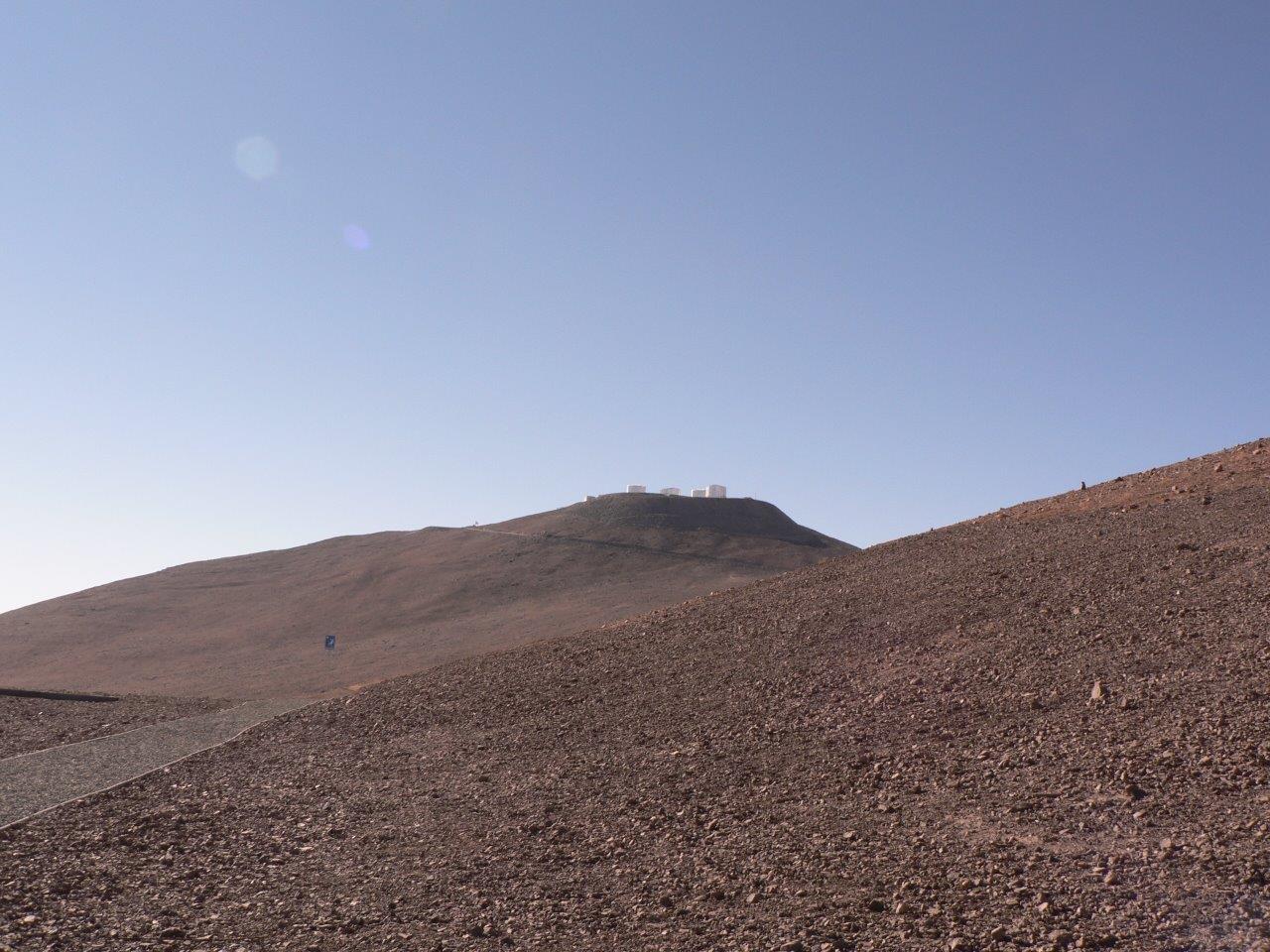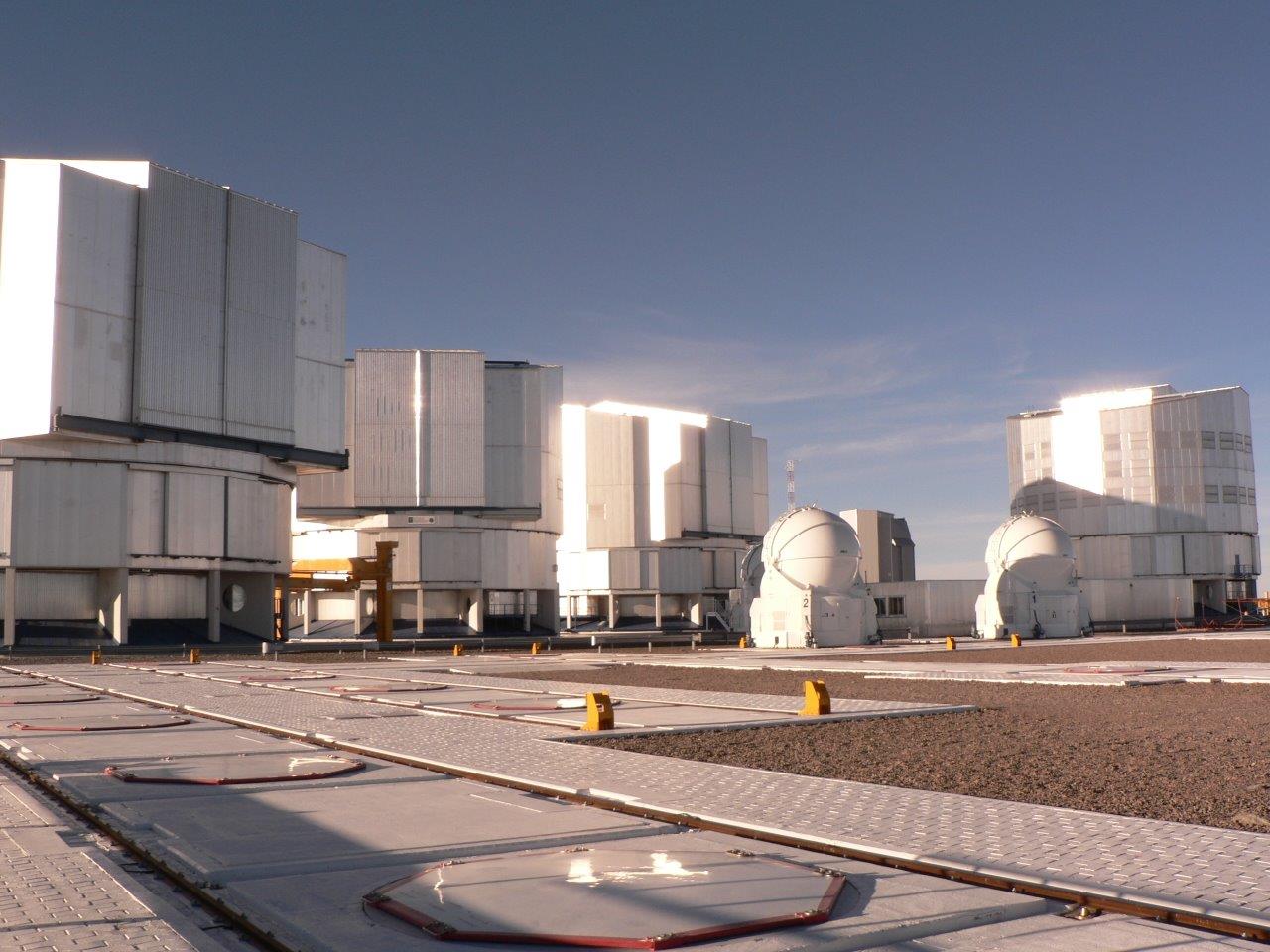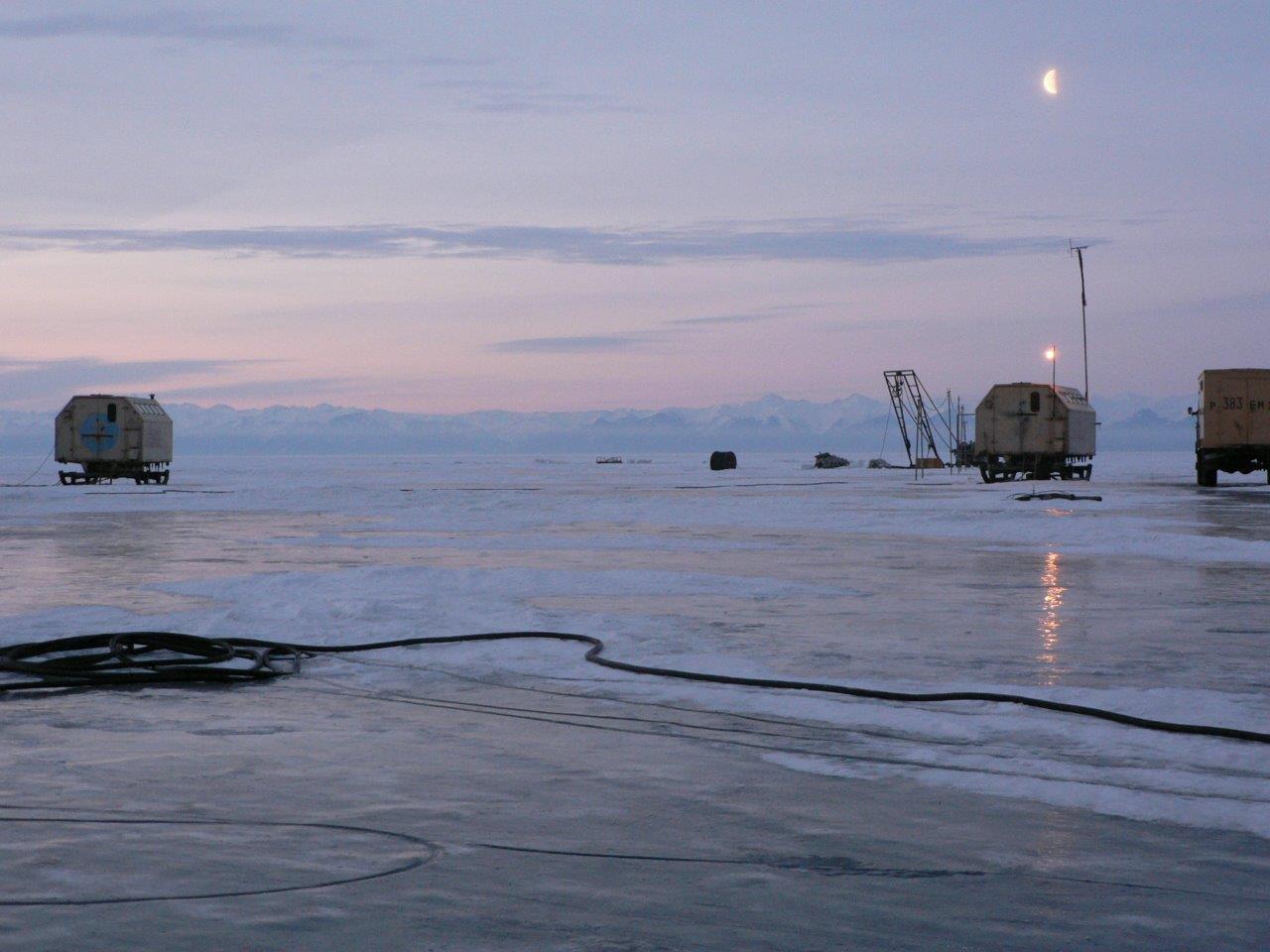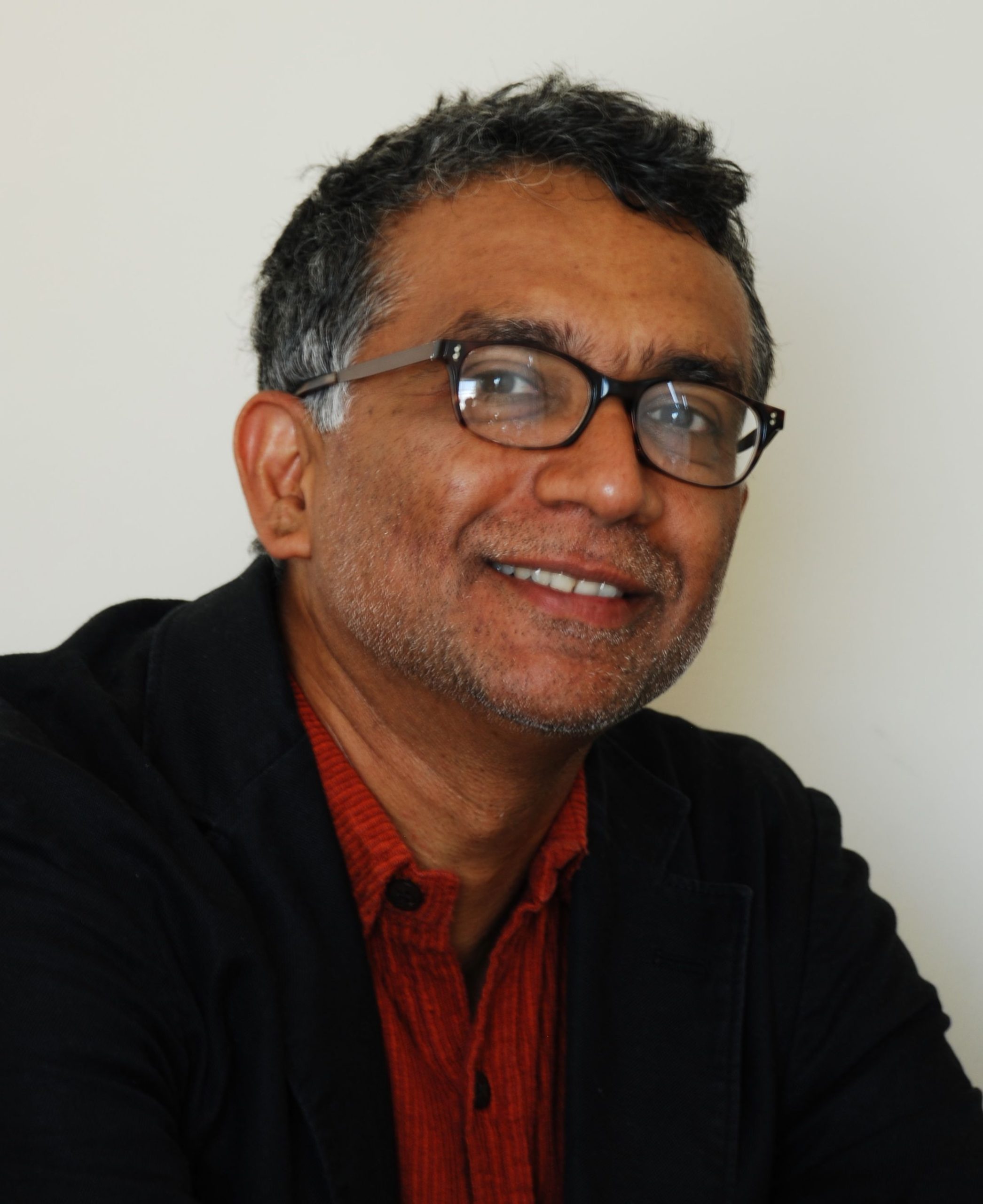
Many moons ago now, more than I care to remember, I had come from India to study for my master’s in computer science at the University of Delaware in Newark. All foreign teaching assistants, and I was one, had to undergo training on the intricacies of teaching American students. And as part of that training we had to deliver a short lecture that was video-taped and analyzed. A Scottish student walked up to the blackboard and began his talk. “I’m going to tell you a theory about dinosaurs,” he said. We all perked up.
“A dinosaur,” he said, as he chalked out the contours of the beast on the blackboard, “is thin at one end, fat in the middle, and thin at the other end.” That was his theory.
A narrative, a story, too has a beginning, a middle, and an end. Of course, the more intricate your storytelling, the less obvious these demarcations will be, the greater the likelihood that you’ll have stories within stories, and you may even play with the temporal order of events. Nonetheless, you’ll be lining up a sequence of episodes that lead the reader along a path you think best tells the story.
 A story about science has to contend not just with narrative but with facts, figures, and explanations. Elucidating the science is integral to many science stories, but such exposition can be heavy going. A science writer’s challenge then is to weave a seamless tale, from threads of narrative and exposition.
A story about science has to contend not just with narrative but with facts, figures, and explanations. Elucidating the science is integral to many science stories, but such exposition can be heavy going. A science writer’s challenge then is to weave a seamless tale, from threads of narrative and exposition.
For examples, I’d like to consider some from my book The Edge of Physics, with apologies to far better and more accomplished works that exist—The Edge of Physics is what I know best, in terms of the decisions that went into putting the words on the page.
The beginning is important. Each chapter in The Edge of Physics is structured as a story of travel through an exotic land (the Atacama Desert, or the Karoo in South Africa, for example). The reader becomes a fellow traveler, and we visit some telescope or experiment and learn about the physics, but the narrative force comes from being a visitor in an alien place. Each chapter opening had to create a mood, one that reflected as closely as possible how I felt in those faraway places, always keeping in mind the standard admonition: Show don’t tell.

The chapter on some of world’s largest telescopes atop Mount Paranal in the Atacama Desert in Chile begins thus: “The first thing that struck me as I flew into Antofagasta was that the city had few trees. Everything in the landscape was a shade of brown or gray, from dark, rusty rocks to pale, ashen silt. The dust-laden trees lent some semblance of green, but even they seemed forlorn and entirely out of place in this desolate land.”
A few more lines set the geographical stage: Antofagasta’s place on the edge of Atacama Desert in Chile, and Chile’s own sliver-like existence along South America’s west coast.
But this was a story about telescopes and physics, and I had to quickly move on. I could have expounded on the various telescopes that dot the Chilean Andes, which would have worked, but might have been a bit dull. I got lucky. I was able to recount an encounter with a fellow traveler: a middle-aged Chilean, a tired-looking mining executive with days-old stubble, who spoke of how his mining company had to obey Chile’s stringent light pollution laws, all for the benefit of keeping their skies dark for telescopes. “People don’t mind,” he said. “It’s important for Chile to have observatories.” It was the perfect segue into talking about what makes the Chilean Andes so wonderful for astronomy.

When I had jotted down this conversation in my notebook, I had no idea it’d come in useful. That’s true of all the research you do. Be curious. Be voracious. Collect facts, whether about science, people or places, useful or seemingly useless. You’ll be surprised by when and where you can find use for them.
For example, when I was sitting in the reception room of the European Southern Observatory’s offices in Antofagasta, waiting to board the bus to Mount Paranal, I saw a spectacular photograph of the Sombrero Galaxy, so called because the dark dust lanes that circle the luminous core look like the rim of a Mexican hat. While that photograph had been taken by a modern telescope, the Sombrero had also been studied in the early 1900s by astronomer Vesto Melvin Slipher, whose seminal work informed the subsequent studies of receding galaxies by Edwin Hubble, all of which led to our understanding that the universe is expanding, and that it began in a big bang.
Thus, I was able to use some of the narrative elements from my travel—in this case a chance observation of a framed photograph—to transition to a long paragraph of exposition, moving from the Sombrero to Vesto Slipher’s initial discovery of receding galaxies, and onwards to the discovery of the cosmic microwave background (CMB, the universe’s first light) and dark energy (the mysterious energy of spacetime that is causing the expansion of our universe to accelerate):
[Some background: The reader has already read about Hubble’s discovery of an expanding universe, and Vesto Slipher’s work preceding Hubble’s. The passage below sets up the transition to another section: the discovery of the CMB.]
The next morning, I left my hotel and walked across the railway line that connects Antofagasta to Bolivia, the tracks rising from sea level to an altitude of some 15,000 feet. On the other side of the tracks was ESO’s Antofagasta office, where I waited for a bus to Paranal. The visitors’ room was adorned with pictures of galaxies and nebulae taken by the various ESO telescopes in Chile. The most striking of these was the Sombrero galaxy, the galaxy Vesto Slipher had studied in 1914 and found to be moving away from us at a speed of 1,100 kilometers per second. Slipher, who used a 24-inch refractor for his observations, could hardly have imagined the clarity of this image. The core of the Sombrero bulged with old, red stars. Its halo looked bluish, with faint blobs that weren’t individual stars but globular clusters of a million stars each. A dark dust lane circled the core, sharply silhouetted against the luminous heart of the galaxy and looking like the rim of a Mexican hat.
It was Slipher’s observation of the Sombrero and other galaxies that laid the foundation for Edwin Hubble’s discovery of an expanding universe. This extraordinary finding in turn led to the theory of the big bang. The theory accounted for the expansion, but it also suggested that as the universe ages, gravity should eventually gain the upper hand and cause the rate of expansion to diminish. But in less than a century after Hubble’s work, huge telescopes around the world, including ones in Chile, brought about another upheaval in our understanding of the universe. In 1998, cosmologists announced that the expansion of the universe, rather than slowing down, is speeding up. Nothing in our theories comes close to explaining what might be responsible. The likeliest explanation is that the fabric of space has an inherent energy — called dark energy — that is creating a repulsive force strong enough to counter gravity.
However, the journey from an expanding universe to one filled with dark energy could not have happened without several key intervening discoveries. The first was the accidental sighting of the radiation left over from the early universe. Called the cosmic microwave background (CMB), it was stunning proof, finally, that the universe had begun in a fireball.
The key then is to be choosy about the facts that make up your narrative. They should both move the story along and give you ways of making effortless transitions to paragraphs of exposition.
And like the dinosaur’s middle, the story will begin to expand. In the case of chapter on Chile, it allowed me space to fill it with anecdotes, personal experiences, accounts of scientists, engineers, technicians and even gardeners at work, all with one clear aim: to tell the reader of this astonishing set of telescopes on Mount Paranal and how they were helping us decipher dark energy.
I had a rough rule—no more that 3-4 paragraphs of physics before I went back to talking about either the land or the people. For instance, after a few paragraphs explaining the technical reasons for why astronomers build telescopes in Chile, I could add this seemingly unrelated morsel: “But what delights the astronomers about the sky is also what makes the region so hostile to life.” This was followed by a few lines about how the native Indians in Chile collect water by trapping the fog using nets, which allowed me to work in a fact that particularly fascinated me (and I hoped it would be so for the reader): “It’s the same trick performed by the coastal redwoods in California, whose numerous branches and dense array of needles are such effective traps that on particularly foggy nights the water falling on the ground beneath a giant redwood can rival a rainstorm.”
Stories need to breathe. Find relevant ways of breaking up the monotony of exposition. But beware of being too self-indulgent or too clever. It’s often hard to tell when one is being so, but practice and a good editor and her red ink will help you avoid such pitfalls.

Science is a human endeavor, so if you dig deep enough during your research, you’ll find details that will help with both the exposition and the narrative. I encountered one such detail in a cabin on the shore of Lake Baikal in Siberia. It was a printout of the track of a charged particle called a muon, which had been created when a neutrino smashed into the pristine of waters of Lake Baikal. The Russian physicist Igor Belolaptikov, whose work it was, had pinned the printout above his bed, and he showed it to me with the eagerness of a teenager showing off a fancied pin-up. And why not? It was the track of the first ever neutrino detection using a natural body of water. It was his work, his pin-up. For the story-teller in me, it was the perfect fact, laden with human and scientific significance:
[Belaptikov’s] cabin was a simple affair—one half had two bunk beds, with a long table in the middle. The place bristled with electronics—computers, modems, radios, wires. Belolaptikov shared it with Andrei Panfilov, from the Institute of Nuclear Research in Moscow. We talked for an hour, stopping only for some honey-sweetened tea that Panfilov made. Konstantin Konischev, the bare-chested scientist I’d seen earlier on the lake, now dressed in warm clothes, joined in every now and then, especially when the others struggled with their English.“
My business is the reconstruction of muons and neutrinos,” said Belolaptikov, laughing with a childlike joy as he made this disclosure. That reconstruction is tricky business. Hundreds of photomultiplier tubes watch for the flashes of Cherenkov light at the bottom of Lake Baikal. As a neutrino-induced muon races through the water, the light from its Cherenkov cone reaches different PMTs at different times. The skill lies in collecting all the information reaching the PMTs and sifting through it to reconstruct the path of the upward- moving muon. This can then be used to calculate the path of the original neutrino. It is this ability to figure out where a neutrino comes from that differentiates a neutrino telescope from a mere neutrino detector. A telescope has to identify the source of neutrinos in the sky, and the Lake Baikal instrument can do so with an angular resolution of about 2.5°, meaning that it can distinguish neutrinos coming from points in the sky separated by a distance of five full moons. The Baikal telescope—like all other neutrino telescopes that use natural bodies of water or ice—has seen only atmospheric neutrinos. Everyone here is waiting for the day when a high-energy neutrino from outer space will make its presence felt in their little corner of the lake.Belolaptikov recalled his first neutrino—indeed, the Baikal detector’s first. “It was great,” he said. “Here, you can see.” He leaned over his bunk bed and removed a piece of paper pinned to the wall above. It was a printout of the path of an upward muon, reconstructed from the detection of its Cherenkov cone by the PMTs along the way. “This is the first one—the real, reconstructed one.” Teenagers have pinups on their walls; Belolaptikov had this drawing of an event from 1993. And why not? It was the first-ever neutrino seen by humans using a natural body of water as a detector. He and his colleagues had done the reconstruction and put the Lake Baikal detector on the map.
When you are running dry of ways to say something, don’t be afraid to quote others who have already articulated better what you want to express. I found myself in such a quandary when I was trying to open the chapter on my visit to Antarctica. I could not find the words. But I found, in Francis Spufford, someone who had voiced, far more eloquently than I could have, the feeling of being tongue-tied by Antarctica: “Nowhere else on Earth is it so clear that a place has an integrity apart from what we might say about it. Nowhere are words so obviously ineffectual a response to what just, massively, exists, whole and complete and in no real need of translation.”
What you are trying to do when your write long-form (massive magazine pieces or book chapters) is to find a story that you want to tell. The story’s narrative structure is the scaffolding for the science you want to explain. In the case of The Edge of Physics, travel provided the narrative structure and its driving force. But the force can come from science itself—the inexorable march from ignorance to enlightenment, scientifically speaking, for any given field of science. And of course, there are plenty of stories that are anchored in real-life situations of the men and women doing the science.
Regardless of the larger structure, if it has to span pages and pages (book chapters, say), there will be smaller stories to be told within. For example, in the chapter on the visit to the Chilean Andes, I could tell the story of the accidental discovery of the cosmic microwave background by two experimental radio engineers, Arno Penzias and Robert Wilson, at Bell Labs in New Jersey. The duo had no idea of what they had found, even as physicists in nearby Princeton University had just worked out the theory. The Nobel Prize committee egregiously overlooked Princeton’s Robert Dicke, whose team had predicted the CMB, when awarding the prize in 1978 to the Bell Labs engineers (their amazing work notwithstanding). Decades later, James Peebles, Dicke’s young colleague during those momentous days, told me about how he had felt when Dicke didn’t get the Nobel: “Perhaps I felt a little chagrin, because I was the medium for alerting Penzias and Wilson to the Princeton work.”
The end, the tail, needless to say, is as important as the beginning or the middle. You need them all. Find a way to connect emotionally with your reader. And pay attention to your sources. Someone might just say something that could be the perfect ending, as NASA glaciologist Robert Bindschadler did when he told me of the “absolute stillness” he felt in Antarctica: “You are there in the middle of nature, and nature is expressed in very simple, impressive, and intensive terms. You can’t ignore the temperature, because it is cold. When the wind blows, you can’t ignore the wind, because it dominates your awareness. And the surface that you are standing on and walking across and living on, that’s all there is. It’s omnipresent and it’s overwhelming. There is no other distraction. I feel I can’t avoid the issue of our place in nature and our uniqueness and smallness.”

Anil Ananthaswamy is a consultant for the London-based New Scientist magazine, and focuses on physics, neuroscience, and climate change. His writings have also appeared in National Geographic News, The Independent (UK), The Times Online (UK), and Matter. He is a columnist for PBS NOVA’s The Nature of Reality blog. His book The Edge of Physics, published in 2010, was long-listed for the UK’s Dolman Travel Book of the Year award and was voted the Book of the Year 2010 by UK’s Physics World. He is now working on his second popular science book, tentatively titled Maladies of the Self. Follow him on Twitter @anilananth.


